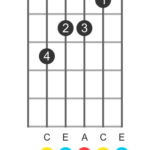National Guitar Day is more than just a date on the calendar; it’s an invitation to reconnect with the universal language of music and the sheer joy of playing the guitar. Since the earliest forms of this instrument emerged, humans have been drawn to its captivating sounds, using it to express emotions, tell stories, and create moments of pure magic. From ancient bards to modern-day pop icons, the guitar has consistently served as a powerful tool for musical expression, capable of conveying everything from heartbreak to elation.
Do you remember the thrill of playing your first song and having someone recognize it? That feeling of accomplishment and connection is precisely what National Guitar Day is all about. It’s a celebration of that pure, unadulterated joy found in the act of making music. So, whether your guitar is gathering dust in the attic or nestled away in the basement, today is the perfect day to bring it out of hiding and let your musical spirit soar.
To truly appreciate National Guitar Day, it’s worth taking a brief journey back in time to understand the evolution of this beloved instrument. The guitar’s story begins in 16th century Spain. Imagine a simpler instrument, quite different from the guitars we know today. These early Spanish guitars were smaller, more slender, and featured only four strings. It’s believed they descended from the vihuela, a Spanish relative of the lute, highlighting the region’s rich history of stringed instrument innovation.
Over the next three centuries, the guitar underwent a fascinating transformation, evolving incrementally with each passing decade. The 17th century saw the addition of a fifth string, expanding its tonal range and versatility. By the 18th century, the sixth string, which is now fundamental to the modern guitar, was incorporated, solidifying the basic structure we recognize today.
Beyond the strings, other aspects of the guitar’s design were also refined. The pegbox, initially resembling that of a viola, was redesigned to be wider and flatter. This subtle change was found to enhance the instrument’s resonance and contribute to a richer sound. This evolution in design demonstrates a continuous pursuit of improved acoustics and playability.
Tuning mechanisms also saw significant advancements. Early guitars relied on somewhat cumbersome metal tuning pegs. However, the 19th century brought about a more refined solution: tuning pins, often crafted from ivory. These pins allowed for much finer adjustments to pitch, making tuning more accurate and less laborious for musicians.
Interestingly, early guitars lacked frets. Players had to rely solely on pressing the strings against the fingerboard to produce different notes. Recognizing the potential for improved intonation and ease of playing, designers introduced metal frets placed across the neck. These frets precisely marked musical intervals, greatly enhancing the guitar’s playability and the clarity of notes.
When the guitar first appeared, it was met with a degree of uncertainty. Popular instruments of the time, like the lute and vihuela, overshadowed it. However, as the 17th century progressed, traditional string instruments began to decline in popularity. By the dawn of the 19th century, they had largely faded from mainstream musical practice, paving the way for the guitar to rise.
This shift in musical preference was partly fueled by the emergence of gifted guitar virtuosos like Fernando Sor and Joseph Kaspar Mertz. Their masterful performances showcased the guitar’s expressive capabilities and captivated audiences. Soon, the guitar solidified its place as a central instrument in modern music, becoming the go-to choice for solo performances and communal singalongs alike.
National Get Your Guitar Out Day serves as a powerful reminder of the guitar’s enduring appeal and its remarkable ability to connect people through music. This instrument possesses a unique magic, inspiring people to embrace their musicality and share the joy of music with others. So, on this National Guitar Day, take a moment to appreciate the rich history and the unifying power of the guitar. Dust off your instrument, strum a chord, learn a new song, or simply enjoy the resonant vibrations. Let the music fill the air and celebrate the day dedicated to this incredible instrument!

